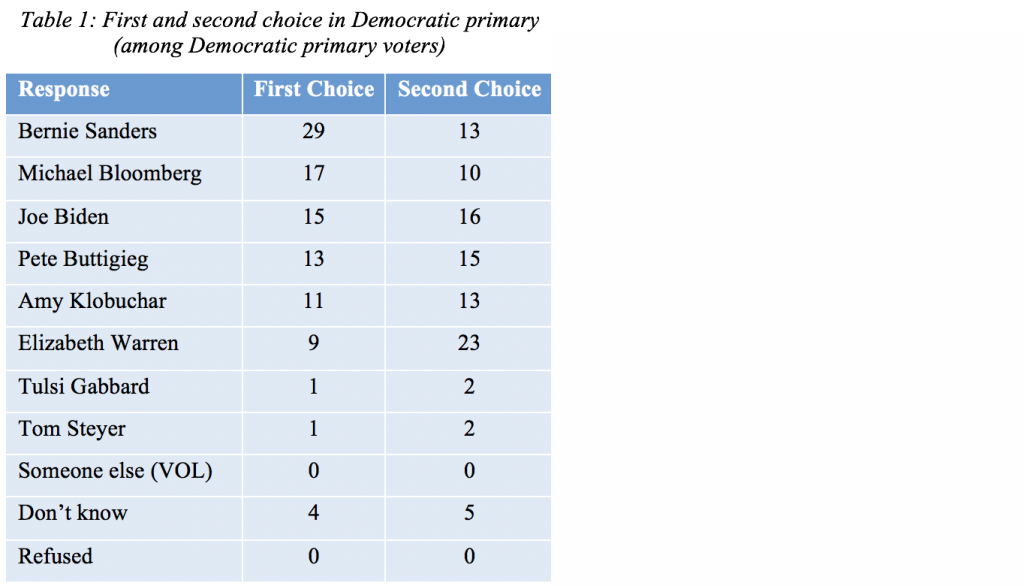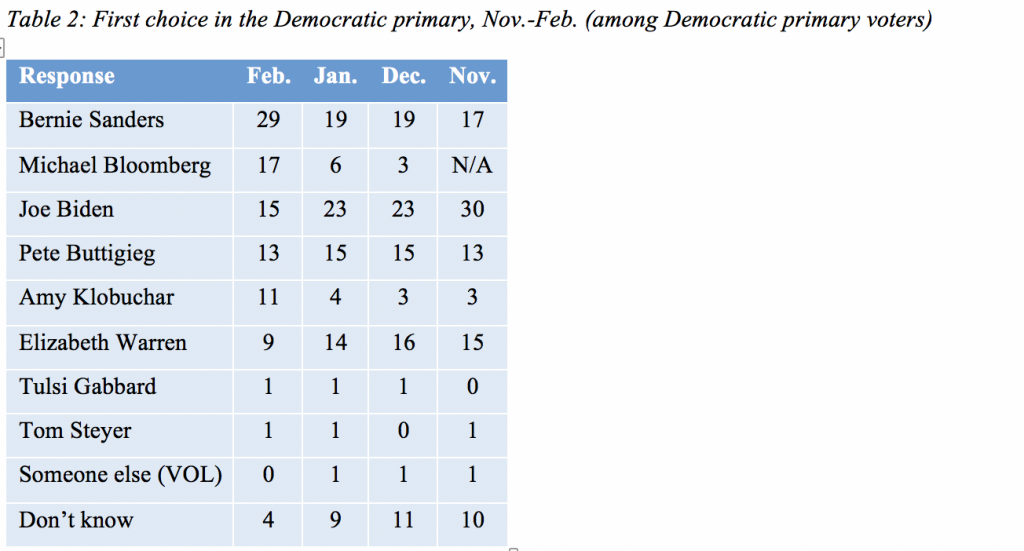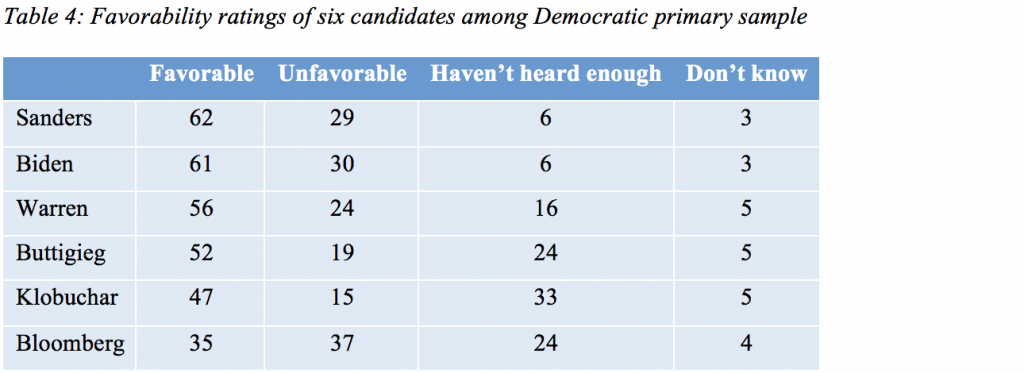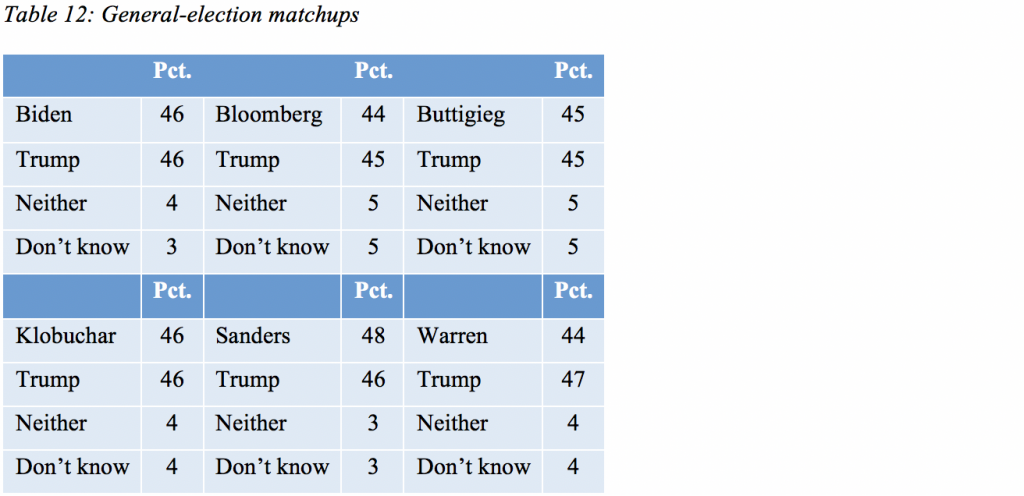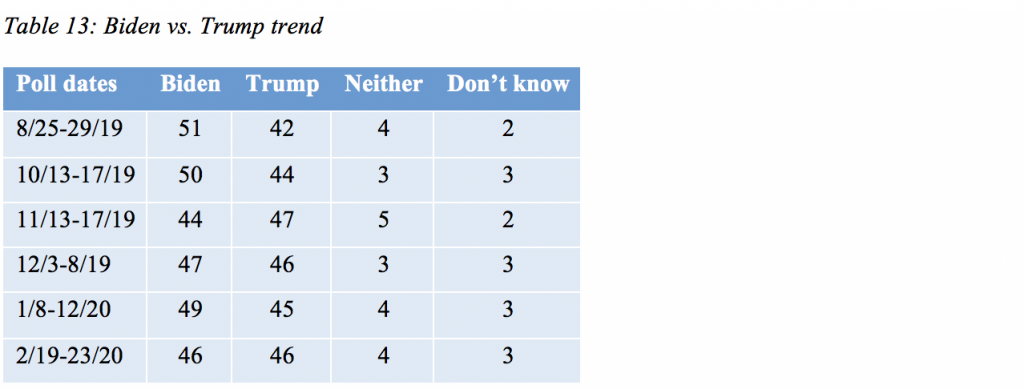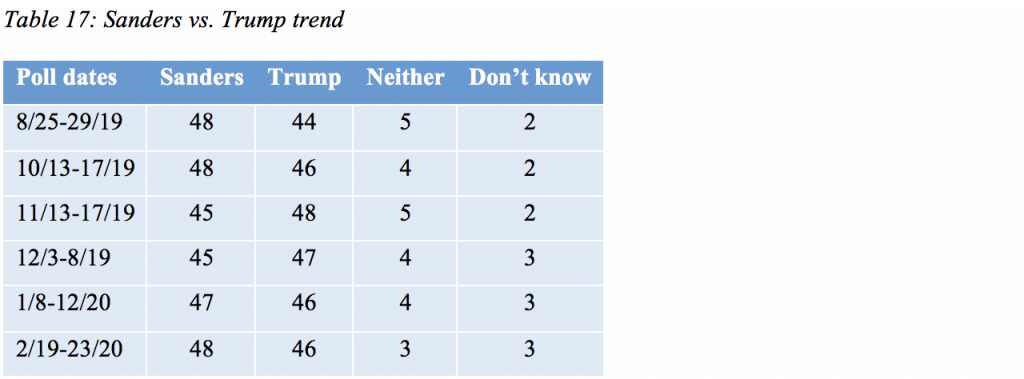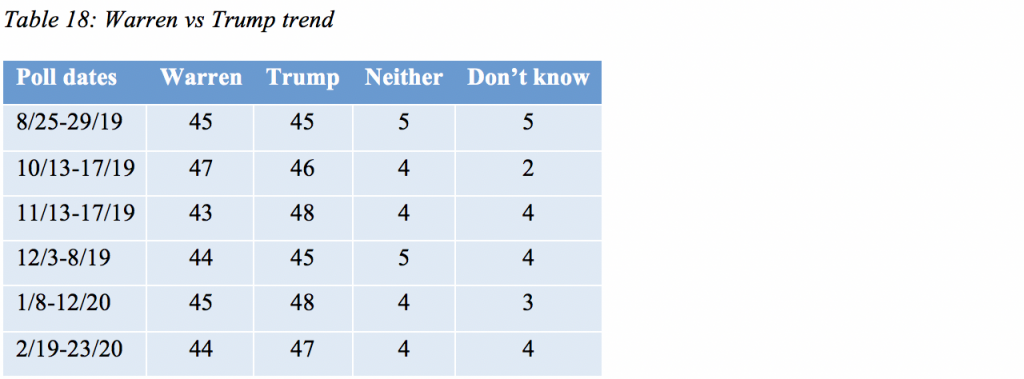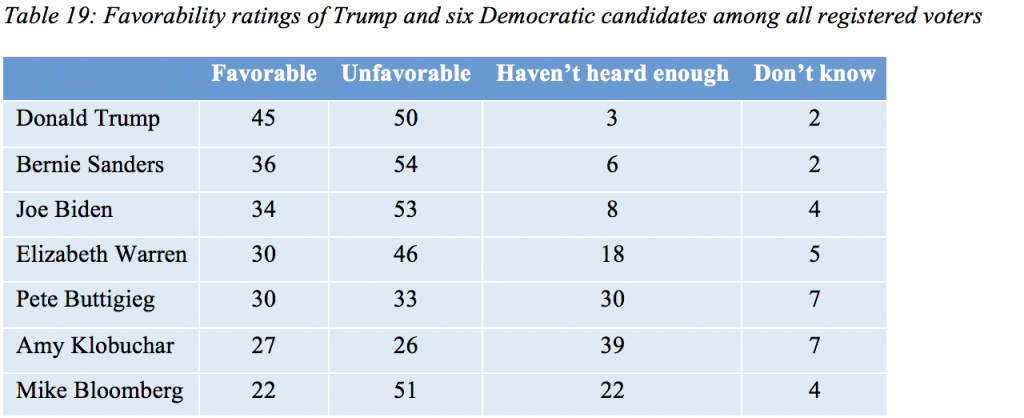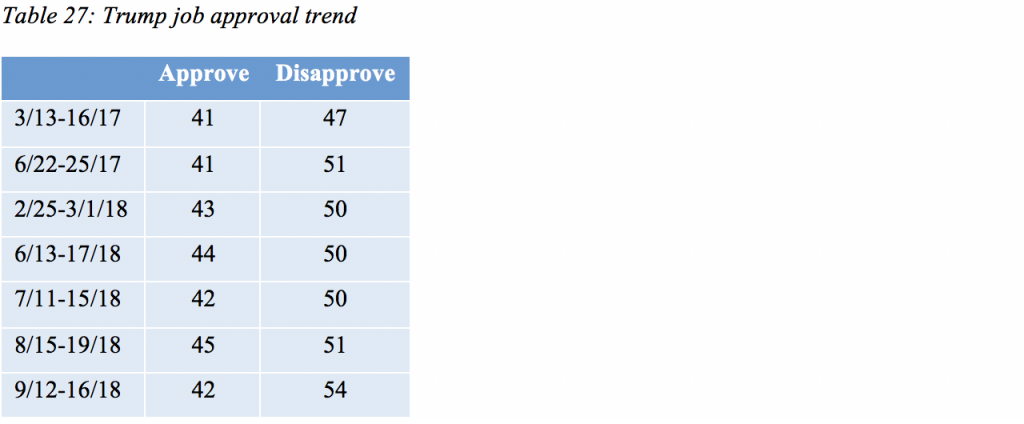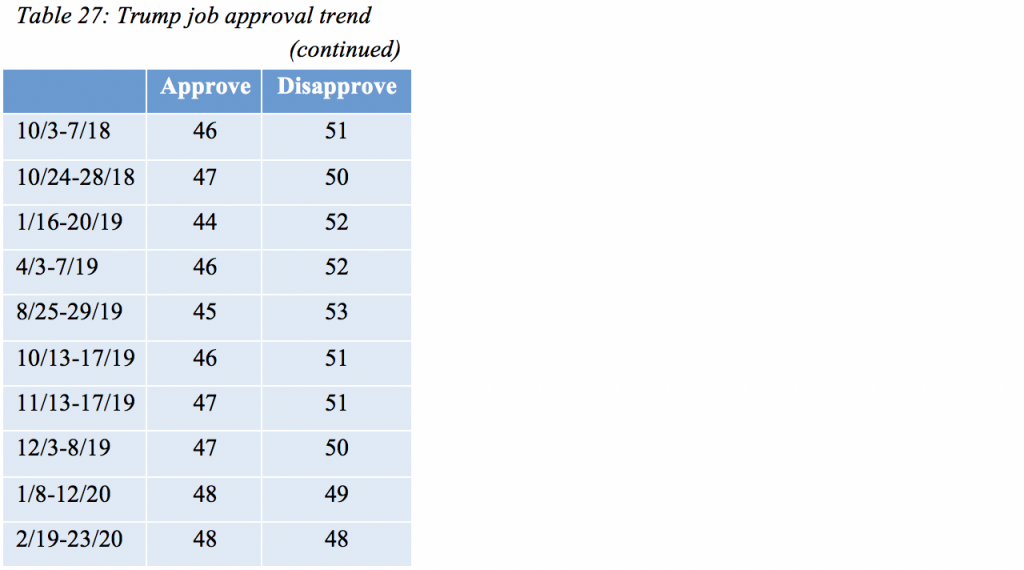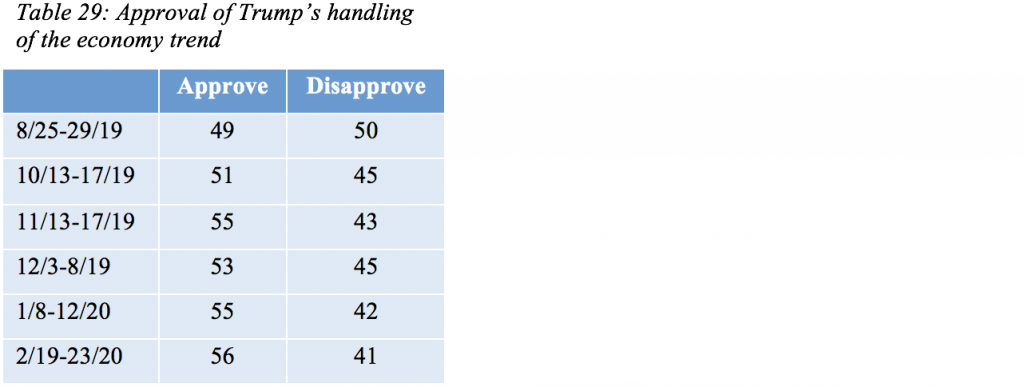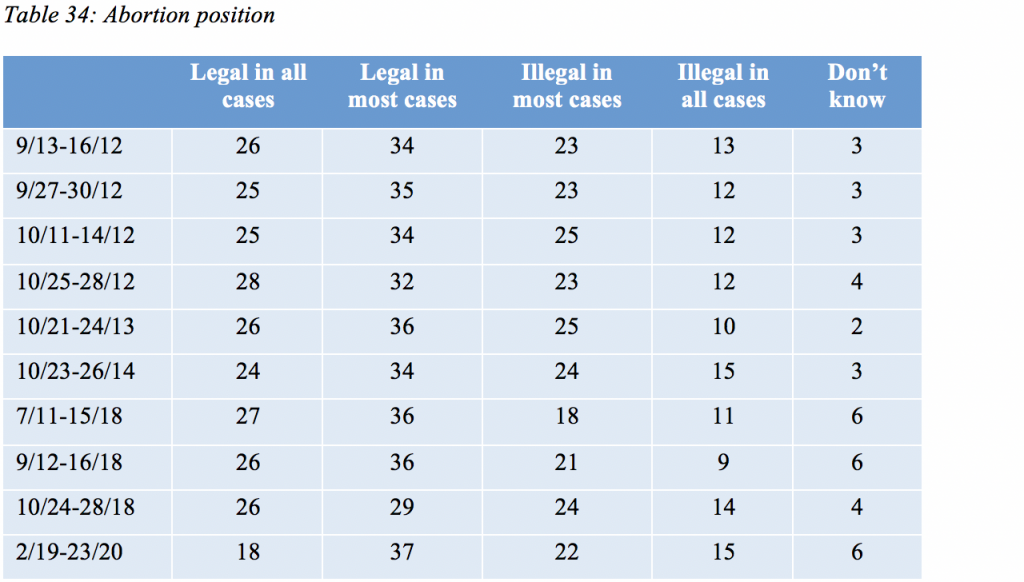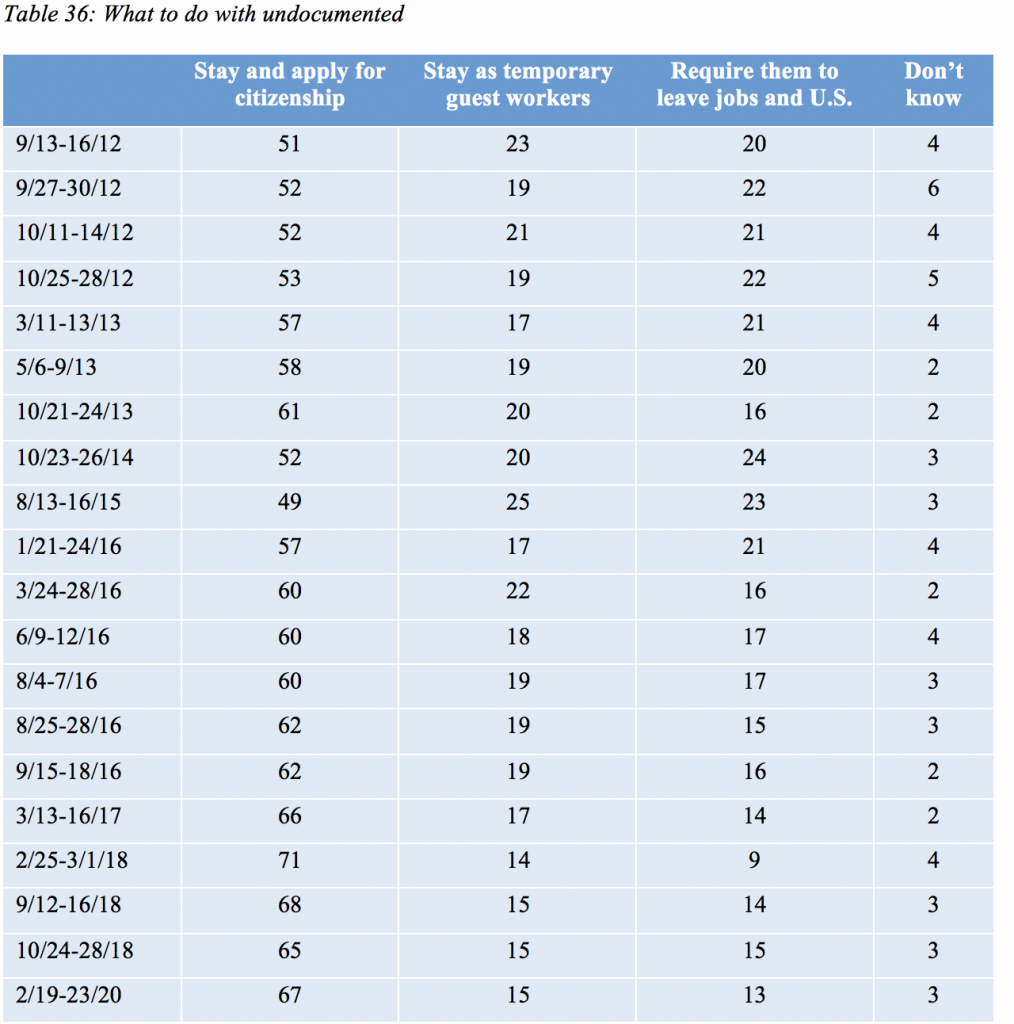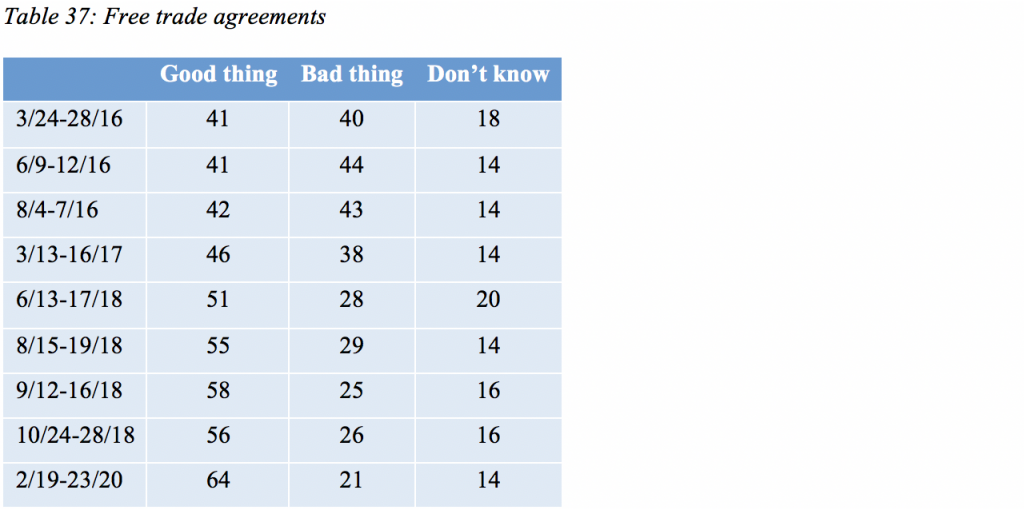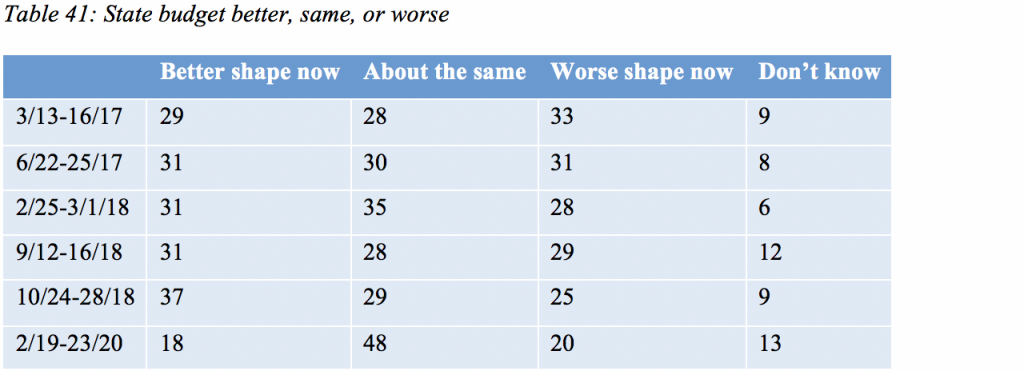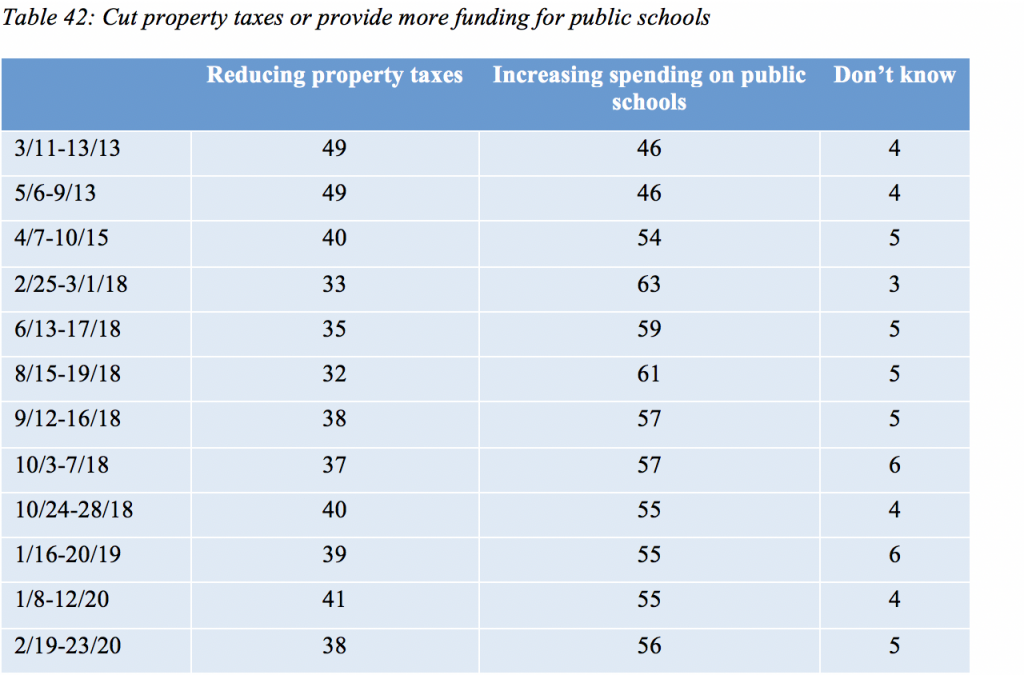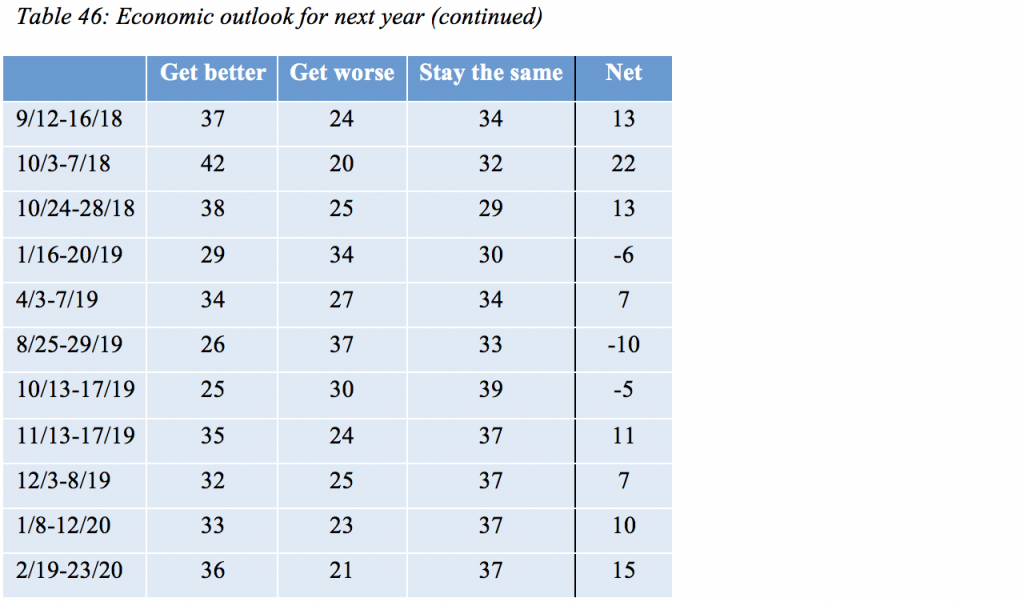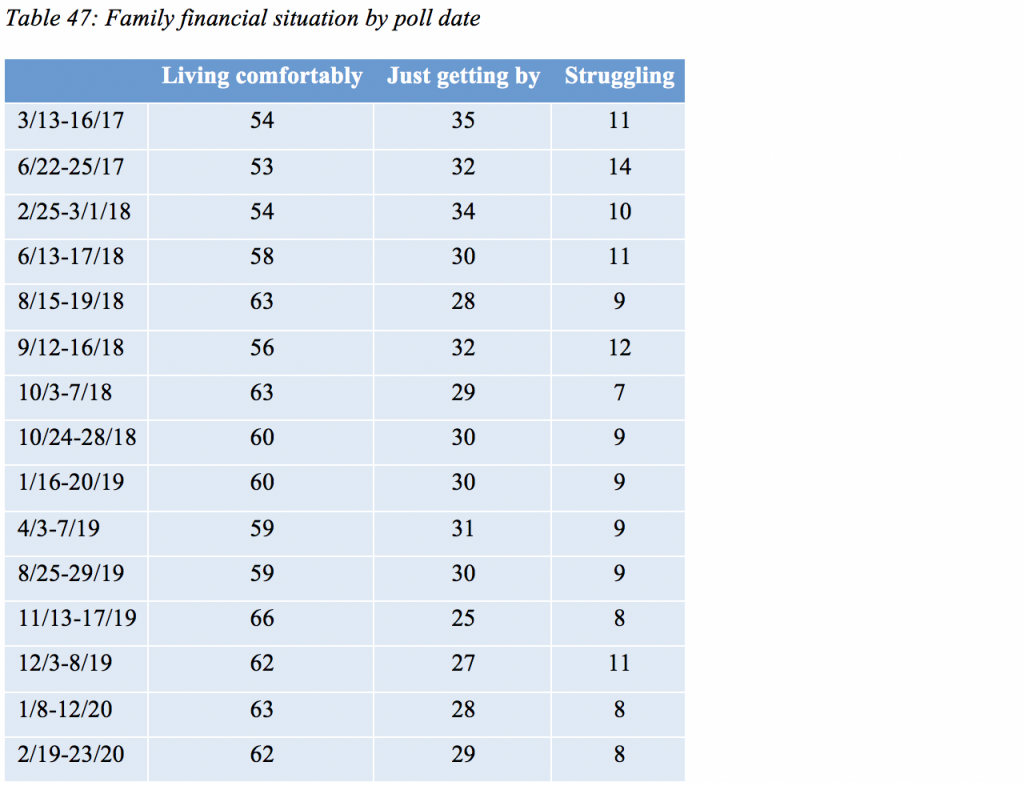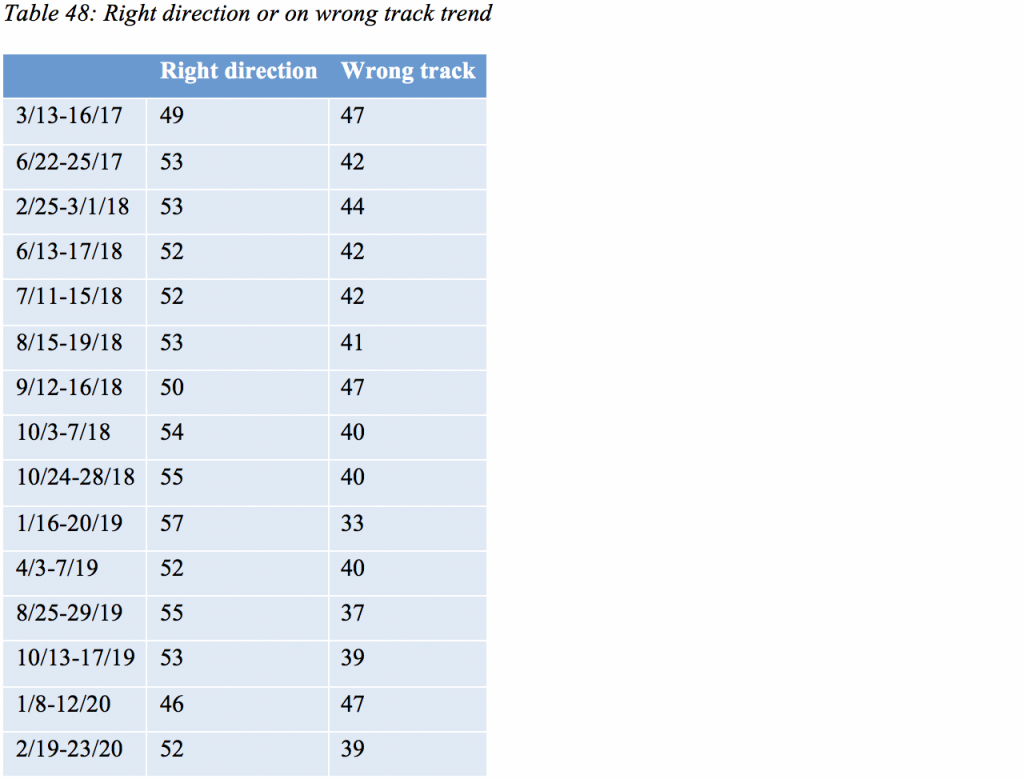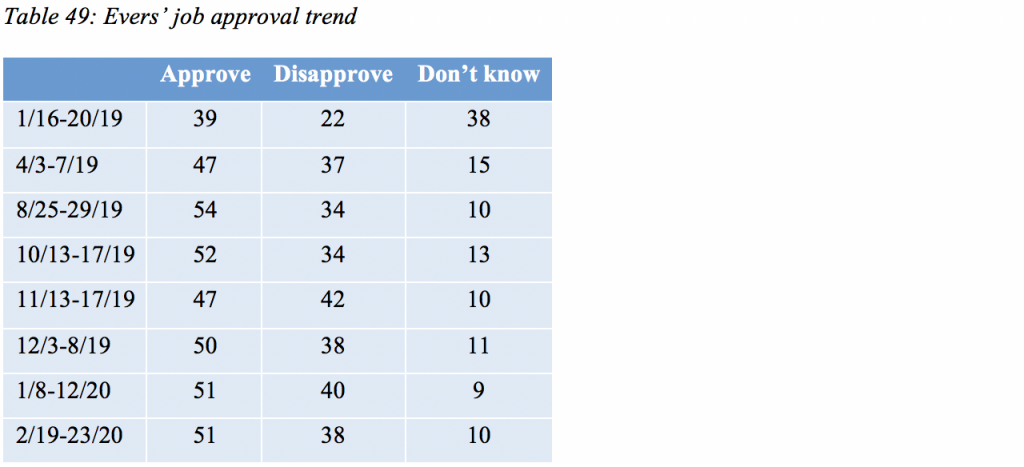New Marquette Law School Poll finds strong support for coronavirus closings, even as it shows substantial economic impact
MILWAUKEE – A new Marquette Law School poll of Wisconsin registered voters finds strong support for government actions to control the coronavirus pandemic, even as the poll also shows these actions to be having a substantial financial impact on voters.
Eighty-six percent say that it was appropriate to close schools and businesses, and restrict public gatherings, while 10 percent say that this was an overreaction to the pandemic. Fifty-one percent strongly approve of legislation providing direct cash payments to individuals, and 28 percent somewhat approve, while 9 percent somewhat disapprove and 6 percent strongly disapprove.
A large majority of voters approve of Gov. Tony Evers’ handling of the coronavirus issue, with 76 percent saying they approve and 17 percent saying they disapprove. A majority, 51 percent, approve of President Donald Trump’s handling of the pandemic, while 46 percent disapprove.
The economic impact is clear in this poll with 9 percent saying they have lost a job or been laid off. An additional 21 percent say someone else in the family has lost employment. Sixty-eight percent say there has not been a job loss in the family.
Work hours have been reduced for 22 percent of respondents. A further 29 percent say someone else in the family has had work hours reduced while 48 percent say no one in their family has had hours reduced.
Twenty-six percent say they have had to work from home. An additional 30 percent say someone else in the family has begun to work from home while 43 percent say no one in the family has been required to work from home.
Fifty-seven percent say their life has been disrupted a lot by the coronavirus epidemic and 28 percent say it has been disrupted some, while 12 percent say only a little and 3 percent say there has been no disruption at all.
The poll was conducted March 24-29, 2020. The sample included 813 registered voters in Wisconsin interviewed by cell phone or landline, with a margin of error of +/- 4.2 percentage points.
Seventy-six percent say they are following the news about coronavirus very closely, and 22 percent are following the news somewhat closely. One percent are following the news not very closely, and 1 percent are not following coronavirus news at all.
Concern about the coronavirus pandemic itself is also high, with 68 percent saying they are very concerned about the epidemic in the United States, 25 percent saying they are somewhat concerned, 5 percent saying they are not very concerned and 2 percent saying they are not at all concerned.
With respect to both the risk of contracting and the seriousness of the coronavirus illness, 30 percent say they are very worried about getting the illness and 40 percent are somewhat worried, while 18 percent are not very worried and 11 percent say they are not at all worried.
Forty-four percent think the coronavirus outbreak will be under control by the end of May, 27 percent say by the end of August, and 11 percent say it will be under control sometime next fall. Seven percent say it will take about a year and 2 percent say it will take more than a year to control the epidemic.
Sixty-two percent think the Democratic National Convention, scheduled to meet in Milwaukee in July, should not be held as an in-person event, while 22 percent say it should meet as planned.
Opinion is divided on holding the April 7 spring election as scheduled, with 51 percent saying the date should be moved and 44 percent saying it should be held as scheduled.
Difference in opinion by partisanship
There is strong support for school and business closures across party lines, though Democrats are more supportive than are Republicans.

Approval of how Tony Evers has handled the coronavirus outbreak is high across partisan groups though there remain differences.

Approval of how Donald Trump has handled the coronavirus epidemic is sharply partisan.

Concern over coronavirus in the U.S. reflects significant partisan differences, despite high overall concern.
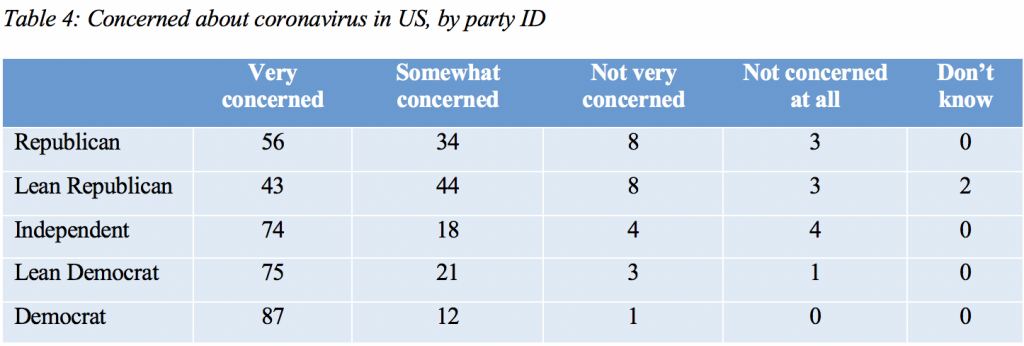
Democratic presidential primary
Since the last Marquette Law School poll in February, the Democratic primary field has shrunk to two candidates, Vice President Joe Biden and Sen. Bernie Sanders. Table 5 shows how support for each candidate has changed each month since November 2019. Biden held a small lead in November through January, while Sanders moved into first place in February. Those results are much different in the March poll, with Biden at 62 percent and Sanders at 34 percent. Among those who say they are absolutely certain to vote, or have already voted, in the Democratic primary, Biden receives 65 percent and Sanders 32 percent. Given the uncertainty created by historically high levels of absentee voting and the unknown levels of election day turnout, these findings should be viewed with more than the usual caution.

Democratic presidential primary preference items were asked of those who said they will vote in the Democratic primary in April. That sample size is 394, with a margin of error of +/-5.9 percentage points.
General election matchups
General election matchups between Trump and both Democratic candidates indicate a very close race. In the March poll, Biden receives 48 percent and Trump receives 45 percent. In the other matchup, Sanders is the choice of 45 percent and Trump the choice of 47 percent.
The full trend in general election support is shown in Table 6 for Biden vs. Trump and in Table 7 for Sanders vs. Trump.
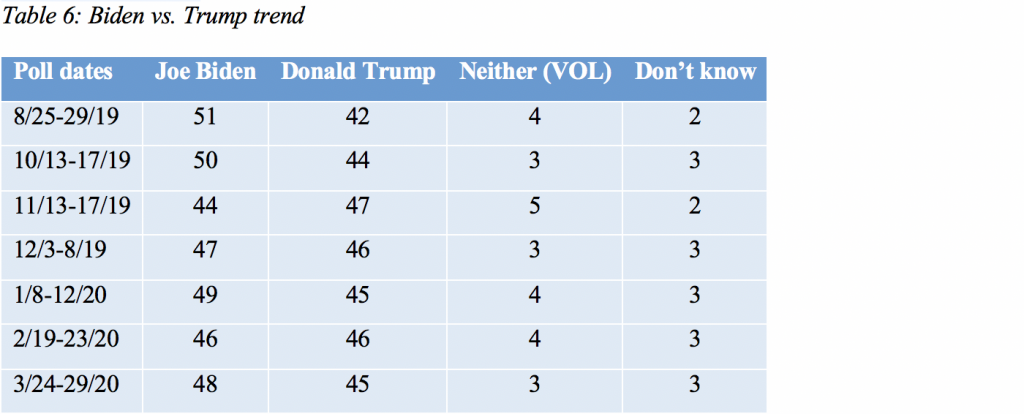
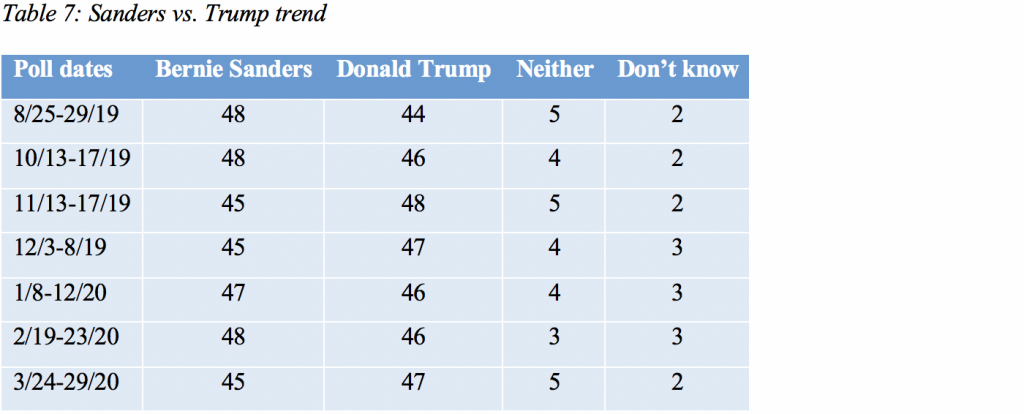
Health care policy
Support for a “Medicare for all policy,” which would provide a single government program for all health coverage, has declined from October to March, as shown in Table 8.

There has been no change in support for a government-provided public option in competition with private insurance, as shown in Table 9. (Strength of support was not measured in October, so only support and opposition are shown in the table for comparability.)

Trump Job Approval
Forty-eight percent of Wisconsin voters approve of the job Trump is doing as president, with 49 percent disapproving. That is little changed from February, when 48 percent approved and 48 percent disapproved.
Trump’s recent job approval trend is shown in Table 10.
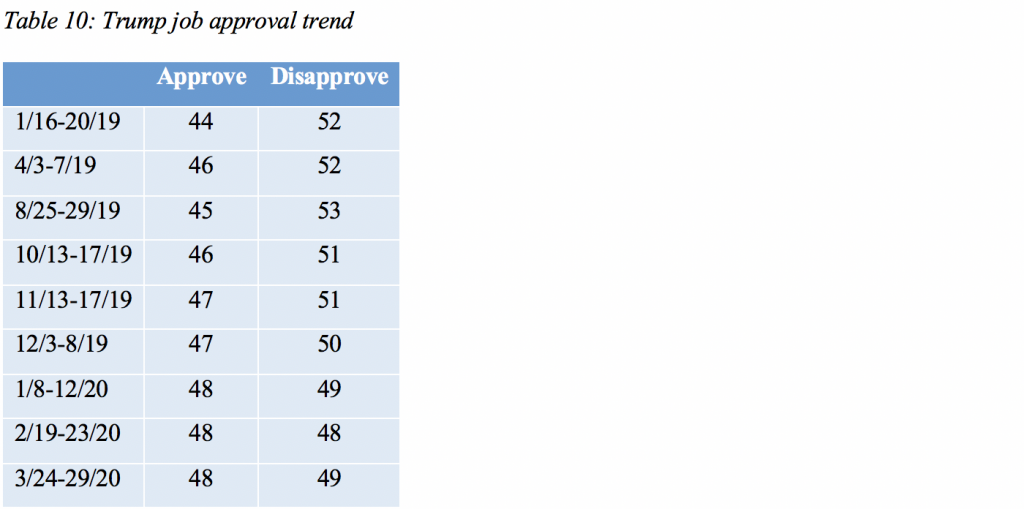
Trump’s job approval is high among Republicans and low among Democrats, with a majority of independents approving, as shown in Table 11.

Fifty-four percent of those polled approve of Trump’s handling of the economy, while 41 percent disapprove. In February, 56 percent approved and 41 percent disapproved.
The trend in approval of Trump’s handling of the economy is shown in Table 12.
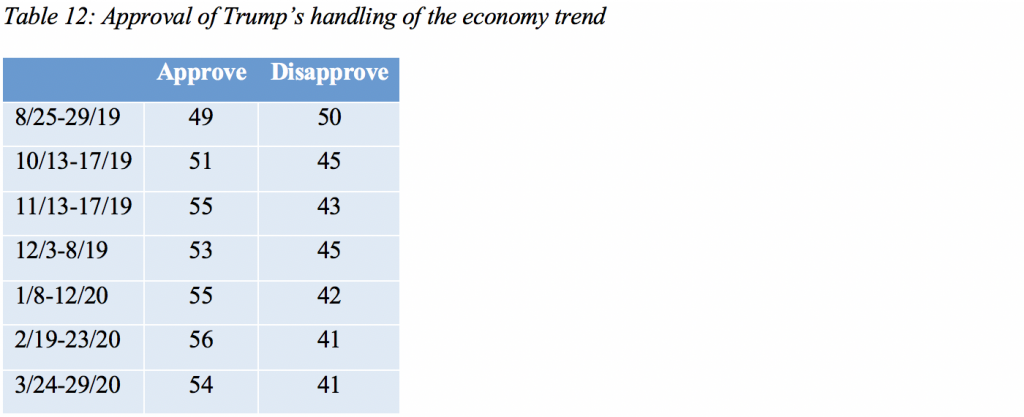
The trend in foreign policy approval is shown in Table 13.

Economic outlook
Despite the coronavirus-induced economic downturn, Wisconsin registered voters hold a positive view of the performance of the economy over the past 12 months, with 41 percent saying the economy has improved over the past year, 31 percent saying it has worsened, and 25 percent saying it has stayed the same. The net (the “better” total minus the “worse” total) turned sharply down in March, however. The trend in economic evaluations since the start of 2019 is shown in Table 14.
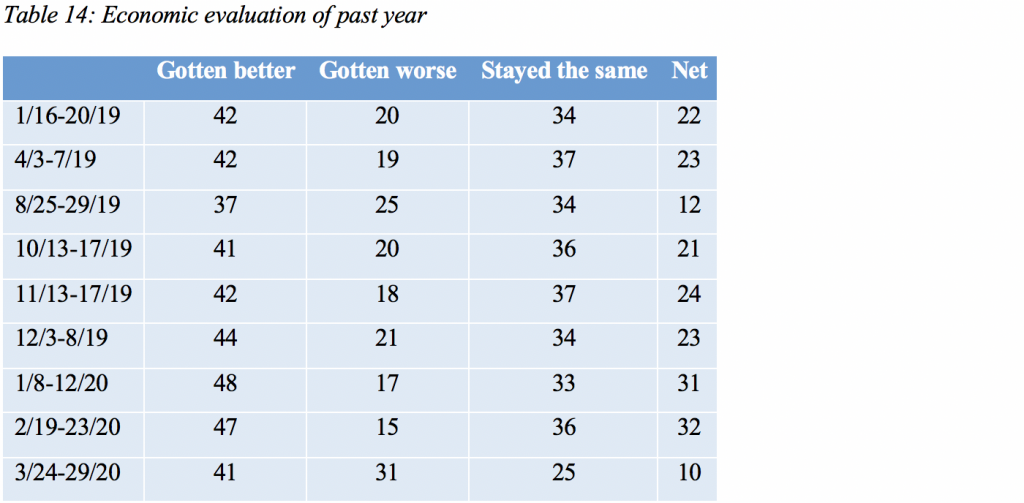
Voters remain optimistic about the economy over the next year. Forty-four percent say the economy will improve, while 34 percent think it will get worse and 13 percent say the economy will remain the same. Both positive and negative expectations rose in March, leaving a net positive outlook. The trend in economic outlook is shown in Table 15.

The overall picture for family financial situations has slightly worsened in March, with a small decline in the percent living comfortably and a small increase in those who say they are struggling. In light of the economic impact of the coronavirus outbreak measured above, it is very likely that the full impact of this economic shock has not yet been fully felt by respondents. The trend in this measure is shown in Table 16.
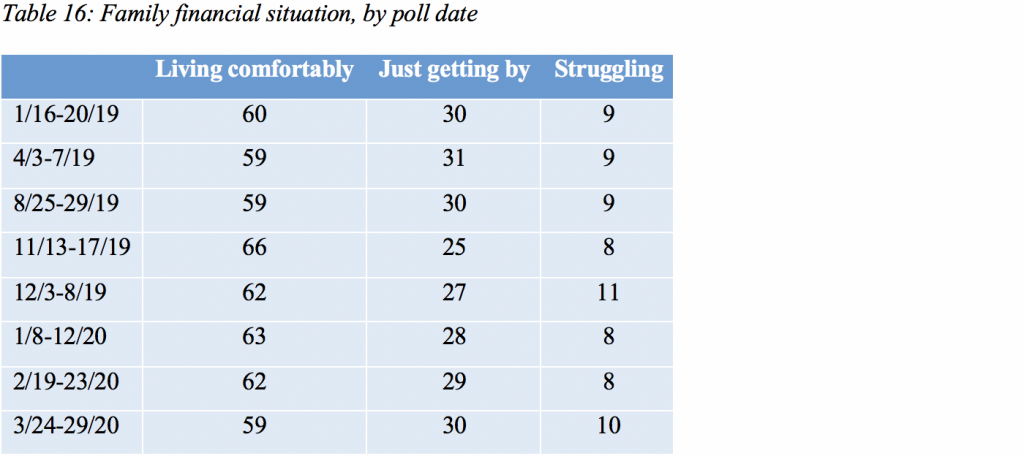
State of the state
In the new poll, 61 percent say the state is headed in the right direction, while 30 percent say it has gotten off on the wrong track. This is a notable rise in the right-direction percentage, perhaps reflecting the positive reaction, seen above, to measures taken to confront the coronavirus pandemic.
The trend in opinion is shown in Table 17.
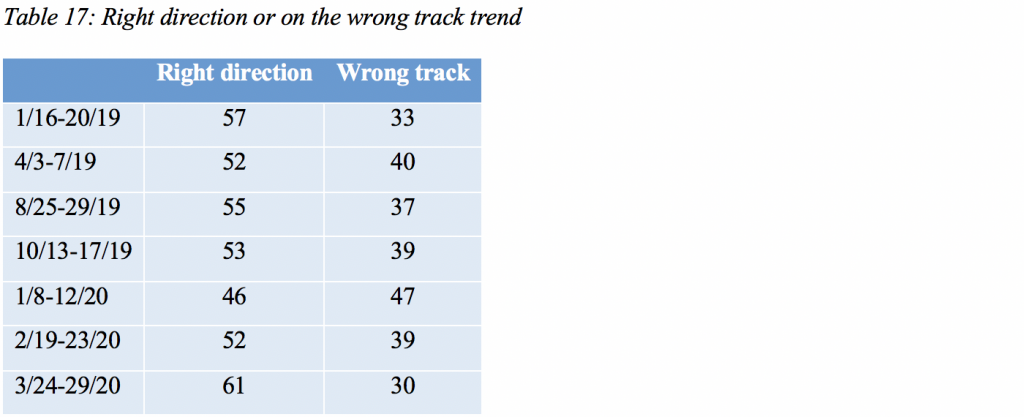
Evers job approval
Gov. Tony Evers’ job approval stands at 65 percent, with disapproval at 29 percent. Six percent say they don’t have an opinion. This is a sharp rise. In February, 51 percent approved and 38 percent disapproved.
The trend in job approval of the governor is shown in Table 18.
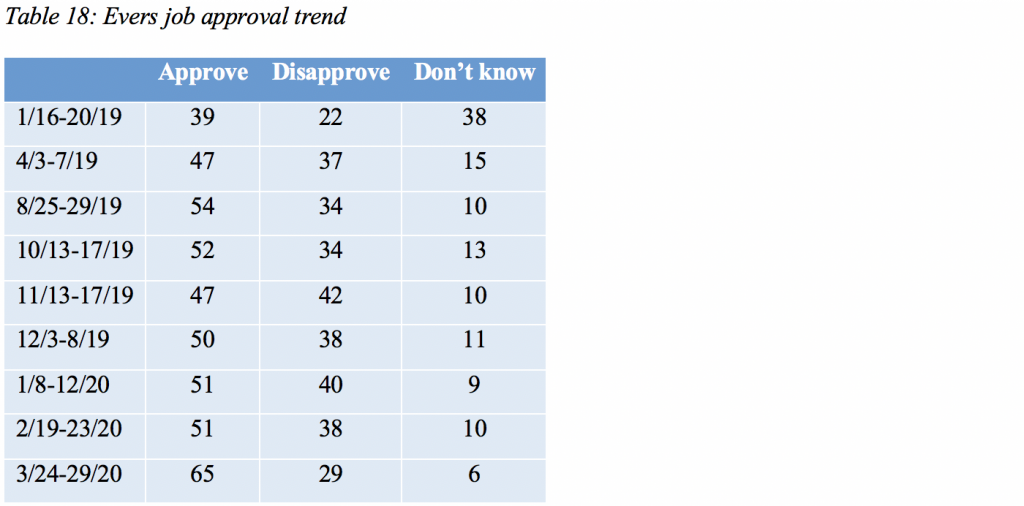
Table 19 presents the favorability ratings of three elected officials in Wisconsin and the percentage of respondents who haven’t heard enough or say they don’t know.

About the Marquette Law School Poll
The Marquette Law School Poll is the most extensive statewide polling project in Wisconsin history. This poll interviewed 813 registered Wisconsin voters by landline or cell phone, March 24-29, 2020. The margin of error is +/-4.2 percentage points for the full sample.
The Democratic presidential candidate preference items were asked of those who said they would vote in the Democratic primary. That sample size is 394, with a margin of error of +/-5.9 percentage points. The margin of error for those Democratic primary voters who say they are absolutely certain to vote or have already voted is +/-6.6 percentage points based on 315 cases.
The partisan makeup of the sample, including those who lean to a party, is 46 percent Republican, 46 percent Democratic and 7 percent independent. The partisan makeup of the sample, excluding those who lean to a party, is 29 percent Republican, 31 percent Democratic and 39 percent independent.
Since January 2017, the long-term partisan balance, including those who lean to a party, in the Marquette Law School Poll has been 45 percent Republican and 45 percent Democratic, with 9 percent independent. Partisanship excluding those who lean has been 30 percent Republican and 29 percent Democratic, with 40 percent independent.
The entire questionnaire, methodology statement, full results and breakdowns by demographic groups are available at law.marquette.edu/poll/results-and-data.

